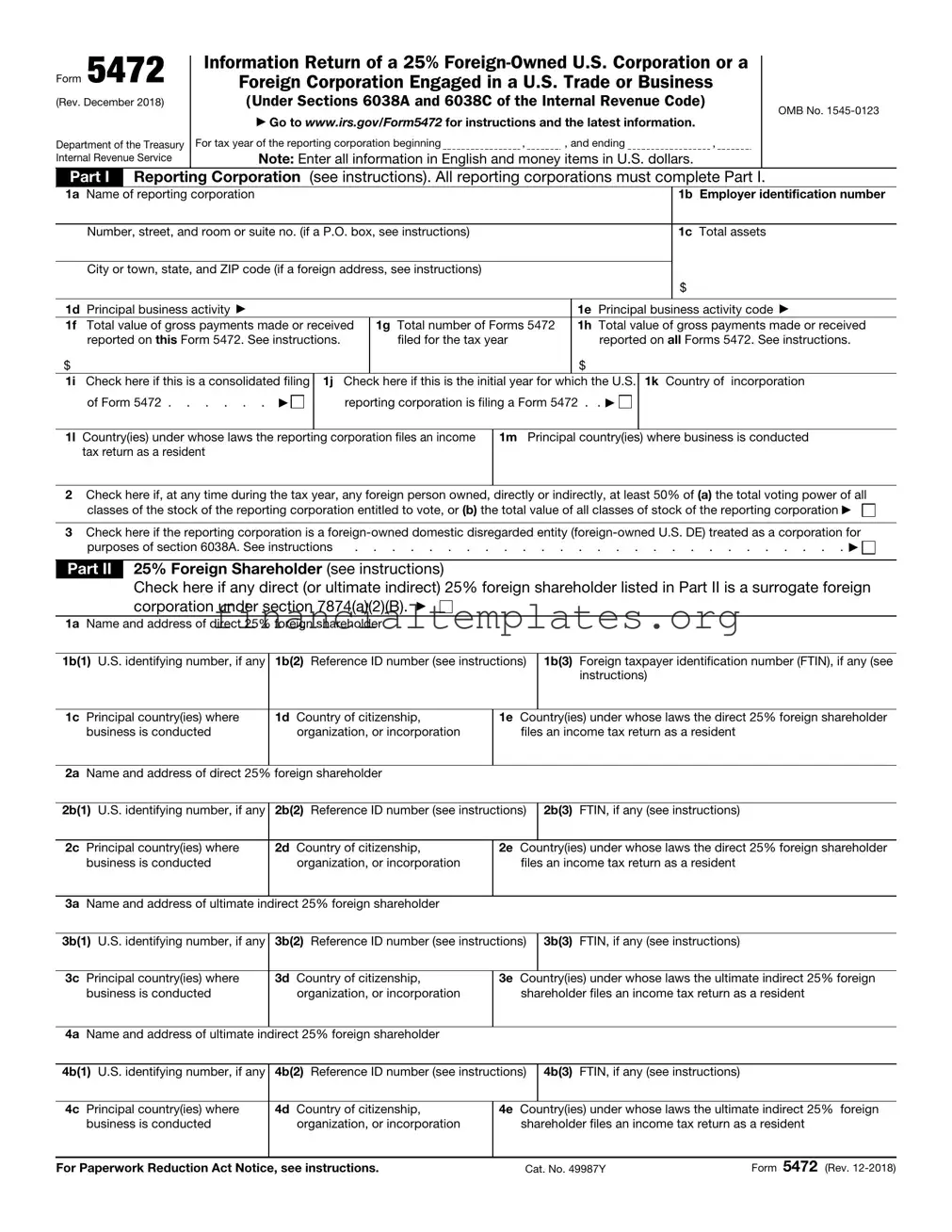8b(1) U.S. identifying number, if any |
8b(2) |
Reference ID number (see instructions) |
|
8b(3) FTIN, if any (see instructions) |
|
|
|
|
|
|
|
|
|
8c |
Principal business activity ▶ |
|
|
|
|
|
8d Principal business activity code ▶ |
|
|
|
|
|
|
8e |
Relationship—Check boxes that apply: |
Related to reporting corporation |
Related to 25% foreign shareholder |
25% foreign shareholder |
|
|
|
8f |
Principal country(ies) where business is conducted |
8g Country(ies) under whose laws the related party files an income tax return as a |
|
|
|
|
resident |
|
|
|
|
Part IV |
Monetary Transactions Between Reporting Corporations and Foreign Related Party (see instructions) |
|
|
Caution: Part IV must be completed if the “foreign person” box is checked in the heading for Part III. |
|
|
If estimates are used, check here. ▶ |
|
|
|
|
|
|
|
|
|
9 |
Sales of stock in trade (inventory) |
9 |
|
10 |
Sales of tangible property other than stock in trade |
10 |
|
11 |
Platform contribution transaction payments received |
11 |
|
12 |
Cost sharing transaction payments received |
12 |
|
13a |
Rents received (for other than intangible property rights) |
13a |
|
b |
Royalties received (for other than intangible property rights) |
13b |
|
14 |
Sales, leases, licenses, etc., of intangible property rights (for example, patents, trademarks, secret formulas) . . |
14 |
|
15 |
Consideration received for technical, managerial, engineering, construction, scientific, or like services . . . . |
15 |
|
16 |
Commissions received |
16 |
|
17 |
Amounts borrowed (see instructions) a Beginning balance |
|
b Ending balance or monthly average ▶ |
17b |
|
18 |
Interest received |
18 |
|
19 |
Premiums received for insurance or reinsurance |
19 |
|
20 |
Loan guarantee fees received |
20 |
|
21 |
Other amounts received (see instructions) |
21 |
|
22 |
Total. Combine amounts on lines 9 through 21 |
22 |
|
23 |
Purchases of stock in trade (inventory) |
23 |
|
24 |
Purchases of tangible property other than stock in trade |
24 |
|
25 |
Platform contribution transaction payments paid |
25 |
|
26 |
Cost sharing transaction payments paid |
26 |
|
27a |
Rents paid (for other than intangible property rights) |
27a |
|
b |
Royalties paid (for other than intangible property rights) |
27b |
|
28 |
Purchases, leases, licenses, etc., of intangible property rights (for example, patents, trademarks, secret formulas) |
28 |
|
29 |
Consideration paid for technical, managerial, engineering, construction, scientific, or like services |
29 |
|
30 |
Commissions paid |
30 |
|
31 |
Amounts loaned (see instructions) a Beginning balance |
|
b Ending balance or monthly average ▶ |
31b |
|
32 |
Interest paid |
32 |
|
33 |
Premiums paid for insurance or reinsurance |
33 |
|
34 |
Loan guarantee fees paid |
34 |
|
35 |
Other amounts paid (see instructions) |
35 |
|
36 |
Total. Combine amounts on lines 23 through 35 |
36 |
|
Part V |
Reportable Transactions of a Reporting Corporation That Is a Foreign-Owned U.S. |
DE |
(see instructions) |
|
|
Describe on an attached separate sheet any other transaction as defined by Regulations section 1.482-1(i)(7), |
|
|
such as amounts paid or received in connection with the formation, dissolution, acquisition, and disposition |
|
|
of the entity, including contributions to and distributions from the entity, and check here. ▶ |
|
|
Part VI |
Nonmonetary and Less-Than-Full Consideration Transactions Between the Reporting Corporation |
Describe these transactions on an attached separate sheet and check here. ▶





 foreign person or
foreign person or 
 U.S. person?
U.S. person?